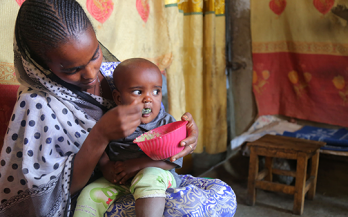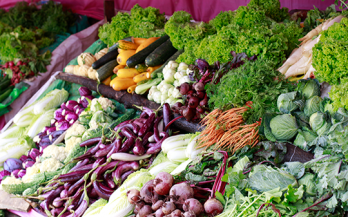The need for evidence to inform nutrition program design and implementation has long been recognized, yet the generation and use of evidence for program decision making has lagged. The purpose of this study was to assess the strengths and areas for improvement of current population-based and targeted fortification programs.
This paper summarizes the discussions and priority research areas for the forthcoming years on the industrial and regulatory technical considerations in rice fortification. It also covers considerations for implementing it as a public health strategy and assuring equitable access and universal coverage, were reviewed in this consultation.
The question whether diets composed of local foods can meet recommended nutrient intakes in children aged 6 to 23 months living in low- and middle-income countries is contested.
This supplement presents results from Fortification Assessment Coverage Toolkit (FACT) surveys that assessed the coverage of population-based and targeted food fortification programs across 14 countries. It then discusses the policy and program implications of the findings for the potential for impact and program improvement.
The objectives of the paper are to review the existing epidemiologic data about peanut allergy, to determine whether the prevalence of peanut allergy is lower in developing countries, and to explore the possible reasons for onset of peanut allergy.
The objective of this study was to propose a pre-competitive, collaborative, multi-stakeholder model for defining, funding and disseminating new research to advance nutrition science.
Lawrence Haddad, Corinna Hawkes and colleagues propose ten ways to shift the focus from feeding people to nourishing them. The purpose of this paper was to set out a new global research agenda for nutrition. It is aimed mainly at researchers, funders and governments, but has important messages for all stakeholders.
The purpose of this study was to create a paper test card that measures a common iodizing agent, iodate, in salt. To test the analytical metrics, usability, and robustness of the paper test card when it is used in low resource settings, the South African Medical Research Council and GroundWork performed independent validation studies of the device.
Business is both part of the problem and the solution to the current food systems challenges. It is critical that we all learn more about this dual impact and that we are able to track how it evolves. By increasing the effectiveness of tracking we will be better positioned to ask and assist businesses to be agents for positive change.
This concept brief advocates for addressing nutrition security of tea farmers to break the vicious cycle of under-nourished coffee families over generations. The successful integration of interventions in tea certification training programs could lead to a more diversified and nutritious local diet, resulting in healthier and more productive tea farmers.










